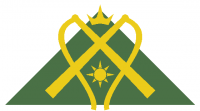Law Enforcement in Turkestan
The enforcement of the law in Turkestan is a responsibility divided between several agencies. In Turkestan, the main local policing is done by the various individual police departments of aymaqs, cities and larger jurisdictions – in some cases two or more aymaqs with low population numbers may share a single police force. In addition to this, there is the nationwide State Police organisation, as well as the now-defunct Homeland Security Force of the EBÜK era.
History
In the Qurultaı period, as it was before the Russian annexation of the region in the XVII and XVIII Centuries, enforcement of the law was left up to the individual Xans, Emirs, Baıs and Sultans. These individual rulers wielded a personal authority that was in many cases little short of absolute, and their soldiers were used for peacekeeping and law enforcement as well as for military duties.
However, Turkestan quickly recognised the need for a national-level force that was not beholden to any of the rulers, able to enforce the law and pursue criminals across jurisdictional boundaries and act in the interests of the whole nation rather than pursuing the private agendas of their liege lord. With this in mind, the State Police of Turkestan ("Türkistan Mamlıkatlıq Milici") was formed in 1926 as an independent national police organisation.
In the EBÜK era, the State Police was renamed the "National Police" ("Ellik Milici"), in keeping with the nationalist agenda of the Government of National Unity. While definitely in the shadow of the larger, better funded and more powerful Homeland Security Force, the State Police did remain an independent agency. This was in large part the result of factional power struggles within the Inner Keņes. The ministers in charge of the Department of Homeland Security tried repeatedly to merge the two forces under their control, but the Secretaries of the Interior found it expedient to have their own security and police agency rather than depending on the Department of Homeland Security to provide the personnel and expertise.
In post-Snorist Turkestan, the massive Department of Homeland Security has been dissolved, and the State Police returned to their old name and preeminence.
State Police of Turkestan (Türkistan Mamlıkatlıq Milici)
TMM, The State Police are the primary national-level police force of Turkestan, with the power and responsibility to take over investigations that are too large or complex for the local forces. Local police forces typically do not like to hand over jurisdiction, however, and a certain amount of professional rivalry can exist between State Police and local police. Typically, local police see the TMM personnel as overbearing, out of touch with local conditions and unwilling to acknowledge the expertise of local policemen. TMM policemen typically view their local colleagues as overly focused on their local affairs and continually trying to take on cases that are too large for their resources.
While considerable ruffled feathers can result from TMM self-declaring their jurisdiction in a case, in many instances the local police and TMM do cooperate fairly well, with local forces asking for TMM help as often as they try to avoid having to do so.
Ranking and Uniform
The TMM ranking system is partly a reduced version of Turkestan's unified military ranking system, and has very similar insignia. All rank insignia, however, including the stripes of Ataman and Çabarman, are worn on the shoulder; the epaulettes are blank for the first three ranks and bear the State Police's crossed-riding-crops insignia for ranks above that. The riding crop, or qamça is a traditional symbol of authority in Turkestan, and is often used visually to denote police powers.
| Rank | English language equivalent | Notes |
|---|---|---|
| Milic | Constable; Police Officer | Starting rank of State Police officers |
| Ataman | Corporal | Equates to Corporal in the military rank table |
| Çabarman | Sergeant | Equates to Lance-Corporal/PFC in the military rank table |
| Livten | Lieutenant | City subsection leader or department chief within a larger detachment |
| Maıor | Major | Commanding officer of a city-level local division of the State Police |
| Başı | Chief | Commanding officer of a province-level local division of the State Police |
| Qorbaşı | Over-Chief | National-level officer of the State Police |
| Milic Ämiri | Police Commander | Overall commanding officer of the State Police |
The uniform of the Turkestani State Police has varied considerably in the three main historical periods of modern Turkestan. In the Qurultaı era, the State Police wore no uniforms as such, instead being betokened by their tall yellow qalpaq-style hats. These distinctive hats, which have continued with minor variation throughout the State Police's existence, have given the TMM their usual nickname: Sarıbaşlar, or "Yellowheads". The colour yellow in Turkestani symbology has connotations of honour or sacredness – the "yellowheads" nickname is not normally used perjoratively. Their uniform under the Government of National Unity was dark grey and off-white or pale yellow; the visible yellow headgear deliberately dulled down to make the National Police less noticeable. The modern uniform's grey-green was a compromise between the green colour common in individual police force uniforms and the EBÜK period dark grey.
Individual Police Forces
Local day-to-day policing duties are handled by the various individual police forces of aymaq and city. Some of the significant local police forces are:
- Buxara Urban Police
- Almalıq Urban Police
- Aşğabat Aymaq Police
- Bişkek City Police
- Samarqand Aymaq Police
- Amudarya River Police
- Sırdarya River Police
Modern individual police forces have mostly taken their uniform and ranking cues from the State Police; however, they have different colour schemes for their uniforms, often involving some combination of green and white. Rank tables can be even simpler, often missing the ranks of Çabarman (though giving that rank badge to the rank of Ataman) and Qorbaşı.


